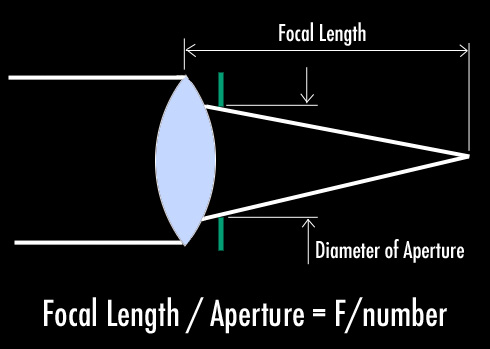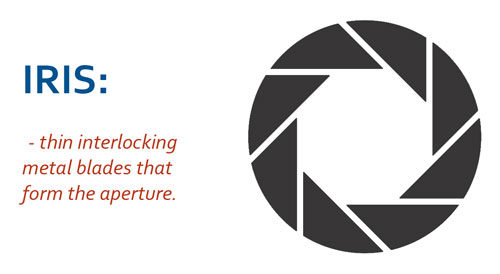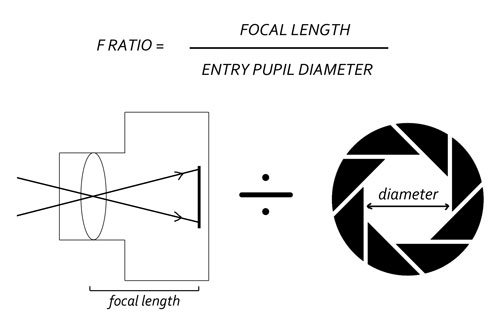is glass size related to lens speed?
Jul 1, 2014 00:46:01 #
f8lee wrote:
The focal length of a lens is defined as the distance in mm from the optical center of the lens to the focal point, which is located on the sensor or film if the subject (at infinity) is "in focus".
And to further complicate things, that "optical center" is not necessarily within the body of the lens itself. It can be in front of, inside or behind. (In the case of a wide to tele zoom, it will travel through the lens lengthwise as the lens is zoomed.)
Jul 1, 2014 02:06:50 #
amehta
Loc: Boston
Nikonian72 wrote:
So far, you have disagreed with every reference ci... (show quote)
I started off agreeing with the wikipedia links you posted (and I did emphasize looking at the entrance pupil page), but I disagreed with your interpretation of the wikipedia page. I also mostly agreed with the dpreview page which f8lee quoted, which I believe disagrees with the previous statement f8lee made.
Yes, the diaphragm changes the amount of light which will reach the sensor, and it will change the effective aperture. That doesn't invalidate the statement that the maximum aperture generally depends on the diameter of the objective lens.
Jul 1, 2014 02:16:28 #
amehta wrote:
You are simply re-stating your previous posts. You quoted, but completely ignored my most latest post above.I started off agreeing with the wikipedia links yo... (show quote)
Please post any legitimate reference supporting your contention that the front element diameter is used to determine aperture number (f/stop).
Please answer this simple question:
If the front element diameter, which does not change, is used to calculate maximum f/stop of a lens, what measurements are used to calculate ALL OTHER f/stop (aperture) settings? ONLY the diaphragm iris diameter changes between different f/stop settings.
Jul 1, 2014 02:23:06 #
amehta
Loc: Boston
Nikonian72 wrote:
You are simply re-stating your previous posts. You quoted, but completely ignored my most latest post above.
Please post any legitimate reference supporting your contention that the front element diameter is used to determine aperture number (f/stop).
Please post any legitimate reference supporting your contention that the front element diameter is used to determine aperture number (f/stop).
I re-stated my earlier posts because you had misrepresented them.
Jul 1, 2014 02:28:43 #
amehta wrote:
Please post any legitimate reference supporting your contention that the front element diameter is used to determine aperture number (f/stop). I re-stated my earlier posts because you had misrepresented them.
Please answer this simple question:
If the front element diameter, which does not change, is used to calculate maximum f/stop of a lens, what measurements are used to calculate ALL OTHER f/stop (aperture) settings? ONLY the diaphragm iris diameter changes between different f/stop settings.
Jul 1, 2014 02:50:05 #
amehta
Loc: Boston
Nikonian72 wrote:
Please answer this simple question:
If the front element diameter, which does not change, is used to calculate maximum f/stop of a lens, what measurements are used to calculate ALL OTHER f/stop (aperture) settings? ONLY the diaphragm iris diameter changes between different f/stop settings.
If the front element diameter, which does not change, is used to calculate maximum f/stop of a lens, what measurements are used to calculate ALL OTHER f/stop (aperture) settings? ONLY the diaphragm iris diameter changes between different f/stop settings.
The objective lens is generally a factor on the maximum f-stop. The diaphragm is open to its maximum diameter in this situation. As the diaphragm stops down, the f-stop gets smaller. The ratio of the diaphragm wide open to the diaphragm stopped down is approximately the ratio between the maximum f-stop and the selected f-stop. Because lenses are complex, this may not be exact, and the actual diameters of the diaphragm openings may be calculated to allow the correct amount of light through the lens.
Jul 1, 2014 14:06:44 #
Nikonian72 wrote:
Query: If the front element diameter, which does not change, is used to calculate maximum f/stop of a lens, what measurements are used to calculate ALL OTHER f/stop (aperture) settings? ONLY the diaphragm iris diameter changes between different f/stop settings.
amehta wrote:
I started off agreeing with the wikipedia links yo... (show quote)
Cause and effect are exactly backwards here.
It's not the diameter of the front lens that determines the mininum f# of an optical system, it's that f#, combined with the maximum field-angle that the optical system is intended to image that dictates the diameters of all the optics in the system*, including that front element or group.
If the front element diameter, which does not change, were used to calculate maximum f/stop of a lens, the diaphragm would have to be at the front element, not at the stop. This wouldn't be a problem for very long focus lenses, but as the focal length decreases, this diaphragm would act more and more as a kind of out-of-focus field stop** and less and less like a aperture stop.
* It's not actually uncommon in camera lenses for some elements to be deliberately made smaller than necessary to pass all the light. This is called "vignetting" and is generally done to eliminate poorly corrected rays from reaching the corners of the film/sensor-- enhancing corner performance at the cost of increased illumination falloff.
** A field stop is a stop that delineates the outer limits of the optical system's field. Camera lenses normally don't have field stops, per se. They are typically found in telescope or microscope eyepieces and must be at the focal plane common to the objective and eyepiece to appear sharp. In other words, a field stop defines what parts of "object space" light will reach the image plane from at all. An aperture stop OTOH, changes, more or less uniformly, how much light reaches all of the points on the image plane that the edges of the optics (or any field stop present) allow any light to reach.
Jul 1, 2014 17:59:31 #
amehta wrote:
Any wide-open diaphragm will never be the same diameter of the objective lens. They have nothing to do with each other.The objective lens is generally a factor on the maximum f-stop. The diaphragm is open to its maximum diameter in this situation.

Jul 1, 2014 18:06:04 #
amehta wrote:
Absolutely correct! And has NOTHING to do with diameter of front element lens, or any lens.As the diaphragm stops down, the f-stop gets smaller.
ALL aperture measurements (f/stops), including maximum aperture, are based on diaphragm (iris opening) diameter compared to focal length as a ratio: http://www.photography-art-cafe.com/what-is-aperture.html


Jul 1, 2014 18:12:30 #
amehta wrote:
Please provide legitimate internet references that discuss "ratio of the diaphragm wide open to the diaphragm stopped down". I have NEVER seen any text nor website reference, comparing two apertures as a ration number. The diameter of a diaphragm set at f/4 is NOT half the diameter of that same diaphragm set at f/2. Both measurements are based on diaphragm diameters compares to lens focal length.The ratio of the diaphragm wide open to the diaphragm stopped down is approximately the ratio between the maximum f-stop and the selected f-stop.
Jul 1, 2014 22:29:03 #
Nikonian72 wrote:
Absolutely correct! And has NOTHING to do with diameter of front element lens, or any lens.
ALL aperture measurements (f/stops), including maximum aperture, are based on diaphragm (iris opening) diameter compared to focal length as a ratio: http://www.photography-art-cafe.com/what-is-aperture.html
ALL aperture measurements (f/stops), including maximum aperture, are based on diaphragm (iris opening) diameter compared to focal length as a ratio: http://www.photography-art-cafe.com/what-is-aperture.html
It's not true that that the f# has NOTHING to do with lens diameters. It's just that it's only one of the factors that determine it.
Jul 1, 2014 22:37:39 #
lighthouse
Loc: No Fixed Abode
I'd say, unless you are going into lens design then don't even worry about it.
I am all for educating oursdelves and understanding our equipment but all the info you need is written on the lens.
ie focal length and f/stops.
Use your brain power to put to other questions that are more relevant to improving your photography.
A much more productive outcome.
I am all for educating oursdelves and understanding our equipment but all the info you need is written on the lens.
ie focal length and f/stops.
Use your brain power to put to other questions that are more relevant to improving your photography.
A much more productive outcome.
wingnut1956 wrote:
Hi fellow 'hoggers br I have a question that may s... (show quote)
Jul 1, 2014 22:38:51 #
lighthouse wrote:
I'd say, unless you are going into lens design then don't even worry about it.
I am all for educating oursdelves and understanding our equipment but all the info you need is written on the lens.
ie focal length and f/stops.
Use your brain power to put to other questions that are more relevant to improving your photography.
A much more productive outcome.
I am all for educating oursdelves and understanding our equipment but all the info you need is written on the lens.
ie focal length and f/stops.
Use your brain power to put to other questions that are more relevant to improving your photography.
A much more productive outcome.
I'm already there. :D
If you want to reply, then register here. Registration is free and your account is created instantly, so you can post right away.

